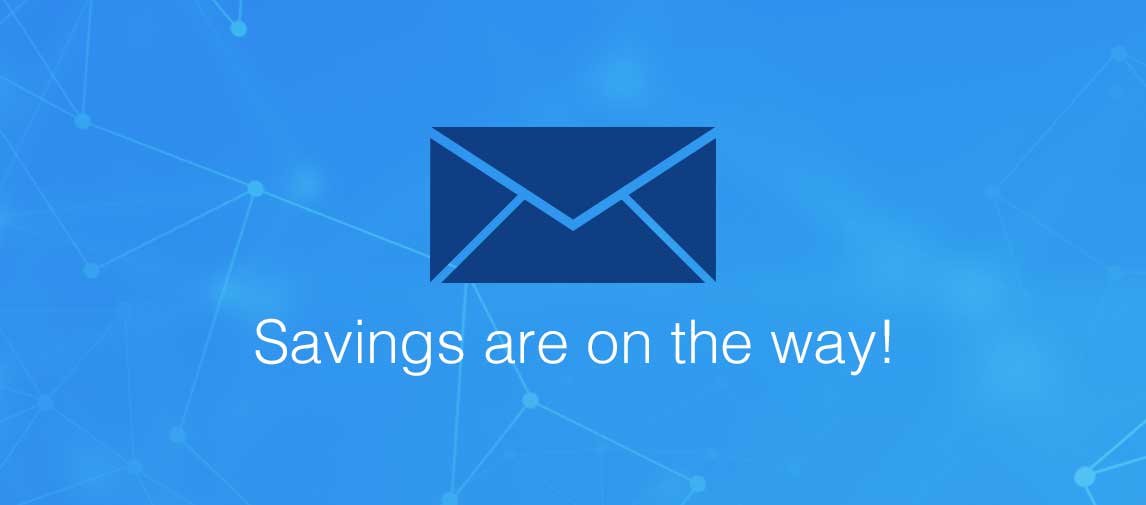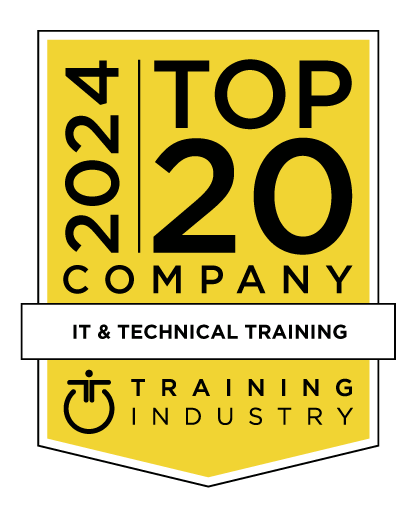title
Please take a moment to fill out this form. We will get back to you as soon as possible.
All fields marked with an asterisk (*) are mandatory.
z/OS Application Development
Course Description
Overview
This course is designed to provide the student with an in-depth understanding of Application Development in a z/OS environment using COBOL, ISPF, JCL, DB2 and CICS.The number of days in the COBOL portion of this course depends upon the students' background.
When the students have experience in another programming language, the COBOL topics are covered in 15 days.
If the students do not have experience with another programming language, the COBOL topics are covered in 25 days because more time is spent on programming logic and more workshops are assigned to ensure the students master both the thought process and the actual language constructs.
There are five days of JCL training, five days of DB2 training and five days of CICS training and these durations are not dependent upon the students prior programming experience.
As a result, the full course will run between 30 and 40 days.
Objectives
Audience
- Anyone interested in learning COBOL programming
Prerequisites
- None
Topics
- ISPF fundamentals - ISPF Option 2: editing files
- Line commands, primary commands
- Submitting IEBGENER JCL to copy a file
- Using SDSF to view output
- Lab assignment: Use ISPF editor primary and line commands.
- Simple program to read a record and print the record
- COBOL Divisions
- Select/assign statement
- Field names
- Simple Picture clauses and type
- Basic Processing Logic
- Move, perform, if statements
- Compiling a program
- Running a program with instructor provided JCL
- Viewing the compile and execution output
- Lab assignment: Simple Report
- Types of JCL statements JOB, EXEC, DD
- Job statement basics and syntax rules
- Continuation, spaces, keyword and positional parameters
- Exec statement: Name, Operation, PGM=
- DD statement to read a file; Data set names, disposition shr
- DD statement to output a file to the MVS spool
- Relationship between the program and JCL
- Lab assignment: Create JCL to execute a program
- Write a program to read a record and print the fields in the record
- Record layouts for input and output records: PIC X, 9
- Level Numbers, Elementary and Group Items
- If statements and the logic for headings
- Internal versus External Decimal points and signs, Zero suppression, commas and dots
- Single record numeric computations – add, multiply, subtract, divide, exponentiate
- Computing results
- If statements for selective computations
- Numeric and non numeric moves
- If statements and performs for selectively printing records
- MVS run time abends SOC7, S0CB explained.
- Common JCL Errors
- Lab assignment: Complicated report.
- PDS versus Sequential files
- Creating Sequential Files: Name, Unit, Space, Disp
- DCB information, Fixed versus Variable files, Blocksize computation
- Catalog Vs VTOC
- IEFBR14
- Review the relationship between JCL and program
- TSO options 3.1, 3.2, 3.3, 3.4
- Lab assignment: Create multiple step job that writes to a sequential file
- Printing totals and averages at the end of a report
- Using redefines to switch between character and numeric presentation
- Multiple If statements to translate codes
- 88 levels
- Nested If problems using the program to selectively print records
- Printing the report in a specified order using COBOL sort, input and output procedures
- Single control break logic to print subtotals and grand totals
- Lab assignment: Modify complicated report to generate totals at a department level
- IDCAMS Repro and Print
- Instream Data
- Condition Codes
- Steplib, Joblib, Linklist
- Concatenating Datasets and Libraries and blocksize problems
- Restart on Job card
- Temporary files
- Tso Option 3.14 - search, 3.12 Compare
- Lab assignment: Create multi step Job using condition codes and concatenated files
- Using copybooks
- Calling a previously written subroutine
- Writing a subroutine
- Setting the return code from a Cobol program
- Accessing the JCL parm from a Cobol program
- Review relationship between program and JCL
- Lab assignment: Create a subroutine and use this subroutine in the previous complicated report
- Idcams Define Basics
- Reading VSAM files sequentially and randomly
- File status
- Updating and deleting records in VSAM files
- Loading records into newly created VSAM files
- Adding records into existing VSAM files
- Lab assignment: Modify the control break program to use VSAM file sequentially and another VSAM file randomly
- Packed and binary fields
- Loading a single dimension table from an external file
- Program with single dimension tables for lookups using perform varying, search and search all
- ABENDS S0C4, 1, 7 caused by subscript errors
- Program to use a single dimension table for totals
- Compile options
- Lab assignment: Replace Random VSAM file processing in the previous lab assignment with table lookups.
- Using a Generation Data Group for backup files
- Creating JCL procedures to execute simple jobs
- Creating JCL procedures to execute backups to a GDG
- Creating JCL procedures to execute restores from a GDG using absolute and relative GDG versions
- Overriding procedure JCL
- Writing procedures with symbolics to restore the files
- Restarting a job from a step within a procedure
- Review the compile procedure in detail
- Lab assignment: Create a GDG to store file backups. Create a procedure with symbolics to execute an update program.
- Programs using Perform thru
- Programs using Go To (and advice not to use this)
- Programs using Perform thru and go to
- Lab assignment: Create a simple report using Perform Thru and Go To.
- Reference Modification
- Initialize
- Inline perform
- Continue vs Next Sentence
- End-if, end-perform
- 88 levels and set statement
- Evaluate
- length of
- Evaluate; perform with test after
- Address of
- Program to count the characters in a field
- Program to print a report with names in title case using COBOL II techniques
- Multiple level control breaks
- Lab assignment: Rewrite simple report to use inline performs.
- IEBCOPY
- JCLLIB
- New style condition code testing
- Output JCL statement
- Lab assignment: Create a jobstream using new condition codes
- Variable Length record files
- Different record types
- Repeating fields
- Occurs Depending ON
- Records are varying depending on...
- Lab assignment: Write a program to read variable length records. Write a program to write variable length records.
- JCL sorting
- Sortwk areas
- Sortin,sortout
- Sort control cards
- Fields=(s,l,fm,order)
- Multiple sort control fields
- Sum fields= none
- Lab assignment: create a jobstream to sort the input file used in the first cobol program into various sequences and run the first cobol program using the sorted output.
- Two dimension table processing for totals
- Sequential match processing
- Inspect
- Internal COBOL table using redefinition
- Lab assignment: Write a program to process a 'master' file and its associated 'transaction' records using sequential match logic with totals obtained via a 2 dimension table.
- DB2 Data formats and their cobol equivalents
- Optional and Mandatory columns
- Select Statement
- SPUFI
- Insert, Update and Delete
- Create table
- Joins
- Sum, Max, Avg, Min, Count functions
- DB2 Substr, Concatenation
- Date functions in select and where clauses year(column) and + years etc
- Group by - control break functions and having clause
- Subqueries - simple, correlated
- Unions
- Lab assignment: Write over 100 SQL statements using the topics covered in class.
- Programming - Embedded SQL
- One row, random read program
- Exec Sql Include SQLCA, DCLGENs
- Host Variables
- Sqlcode
- Precompile and bind functions
- Run JCL- batch TSO
- Selecting Variable Character fields
- SQLCODES 0, 100, -805, -811, -818, -204, -206, -922
- Lab assignment: Modify the intial complicated report to obtain department names from a DB2 table using single selects.
- DB2 Cursors to read multiple rows
- Null Indicators and sqlcode -305
- Insert to load table
- Length of Varchar fields and sqlcode -311
- Proper date formats and sqlcode -180, -181
- Update, Delete
- Cursor for Update of
- Indexes - normal, unique and clustered and sqlcode -903
- Referential integrity and sqlcodes -530, -532
- Commits, Locks and Deadlocks and sqlcode - 911, -913
- Cursor with hold
- Developing Cobol Stored Procedures
- Lab assignment: Write multiple programs using cursors, update, insert and delete statements.
- Variable Definition
- Assignment statement
- Condition Processing
- Loop Constructs
- Handling Error Conditions
- Handling Result Sets
- User Defined functions
- Triggers
- Lab assignment: Implement the stored procedures discussed in the class.
- Build,Send,Return
- Receive,Validate,Process Logic Flow
- Pseudo-conversational vs conversational
- Map coding
- sets, maps, fields
- attributes
- stopper fields
- lengths
- initial
- Menu program
- Pfkeys
- Attribute Manipulation
- Send map
- Asktime/Formattime
- Send data
- Return
- Commarea
- Receive
- Validation
- Security
- XCTL
- Lab assignment: Create a CICS menu program to display a list of possible functions
- Inquiry, Change, Add Programs
- Read, Read Update, Write, Delete VSAM file records
- Single record screens
- Link to a program
- Linked from program
- Lab assignment: Create a CICS program to add, update and delete single records in a VSAM file
- Browse Program
- Startbr, readnext/readprev, Endbr
- Logic of scrolling
- Temp Storage
- Frset - No MDT processing
- Lab assignment: Create a CICS program to display a list of specified records and link back to the program to update and delete single records. Modify the single record screen to utilize FRSET.
- CEDF, CECI, CEDA
- CICS tables - PCT, PPT, FCT
- Storage Violation
- Lab assignment: use CEDF to step thru the browse and update programs which are still being worked on.
- SQL Processing in CICS programs
- Declare cursors with OPTIMIZE parameter
- Browsing data in a CICS program
- Lab assignment: Modify the above CICS programs to use data stored in DB2 tables.
Recognition
When you complete the Instructor-Led version of this course, you will be eligible to earn a Training Badge that can be displayed on your website, business cards, and social media channels to demonstrate your mastery of the skills you learned here.
Learn more about our IBM Cobol Badge Program →Related Courses
-
DB2 Application Programming and Design
DBDB-100- Duration: 5 Days
- Delivery Format: Classroom Training, Online Training
- Price: 2,925.00 USD
-
DB2 Application Programming and Design in C
DBDB-140- Duration: 5 Days
- Delivery Format: Classroom Training
- Price: 2,925.00 USD
Self-Paced Training Info
Learn at your own pace with anytime, anywhere training
- Same in-demand topics as instructor-led public and private classes.
- Standalone learning or supplemental reinforcement.
- e-Learning content varies by course and technology.
- View the Self-Paced version of this outline and what is included in the SPVC course.
- Learn more about e-Learning
Course Added To Shopping Cart
bla
bla
bla
bla
bla
bla
Self-Paced Training Terms & Conditions
Exam Terms & Conditions
Sorry, there are no classes that meet your criteria.
Please contact us to schedule a class.

STOP! Before You Leave
Save 0% on this course!
Take advantage of our online-only offer & save 0% on any course !
Promo Code skip0 will be applied to your registration
Purchase Information
title
Please take a moment to fill out this form. We will get back to you as soon as possible.
All fields marked with an asterisk (*) are mandatory.










